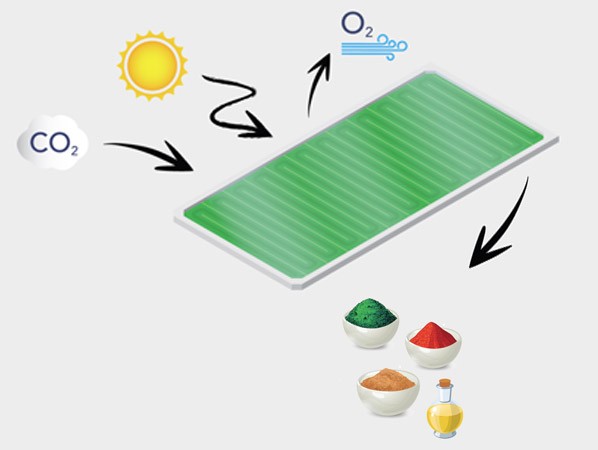
In London, scientists are testing the "BioSolar Leaf," which uses carbon-hungry organisms to help clean the air better than trees can - all while providing an excellent source of protein.
On the new campus of Imperial College London in West London, some roofs will soon contain bright green "biosolar" panels with algae. The plants suck carbon dioxide from the air and produce fresh oxygen 100 times faster than trees covering the same amount of land, and then the microscopic organisms can be harvested to be used in food.
"We call it a 'BioSolar Leaf'," says Julian Melchiorri, CEO of Arborea, the company that designed the new technology. "It uses solar energy, but instead of converting solar energy into electricity (like a solar panel), we convert solar energy into food.
Melchiorri, who graduated from Imperial College London and the Royal College of Art in 2014, focuses on using the technology on a larger scale to produce ingredients. It is a way to produce more protein in a given area than any other type of food production; the algae are also a source of antioxidants and other nutrients. In paste, for example, the algae can be used to add protein. The algae can also create natural nutrient dyes. "Let's say you have blue M&Ms," he says. "The blue algae, instead of being synthetic and having all the problems associated with colourants, actually have more antioxidants than you can find in an apple".
Microalgae are already used in food, but the new panels use their own production process that makes their cultivation less expensive and scalable and results in a higher quality product, says Melchiorri. "We've reinvented how to grow cells by radically changing breeding techniques," he says. The company, which recently launched a Series A financing round, is planning to open a demo plant in San Diego in the near future. But Imperial College London saw an opportunity to control a roof system that would use the algae's ability to clean the air.
"Our new campus is a brownfield site, which means it will be difficult to grow trees to make it green," says Neil Alford, associate provost at Imperial College London. "But what we can do is use this technology to replace the trees. We will have the opportunity to create oxygen in London, which is not a bad idea, but we can also do something that will produce up to 100 times more oxygen per area than trees". Algae naturally absorb CO2 and release oxygen faster than other photosynthetic organisms, and the panel cultivation system makes it possible to carry out this process anywhere. "You can place them on the sides of buildings or on the roofs of buildings, and that's something that's interesting for us.
A city may have a network of locations with the biosolar panels, starting from buildings with large roofs, such as supermarkets or warehouses, or next to industrial installations that emit carbon dioxide. The pilot plant at Imperial College London, which is now under construction, will test how well the system works to purify the air. Arborea will also continue with the panels at larger production sites. Because the panels can be used on infertile land, the process can avoid some of the sustainability challenges inherent in other food production, such as the deforestation that is often caused when land is grubbed up to keep livestock or grow soy. The climate pollution avoided by the production of proteins with algae is even more important than the ability of the algae to suck CO2 from the air, says Melchiorri. "Our primary function is to produce the most sustainable proteins".
Source: © Arborea